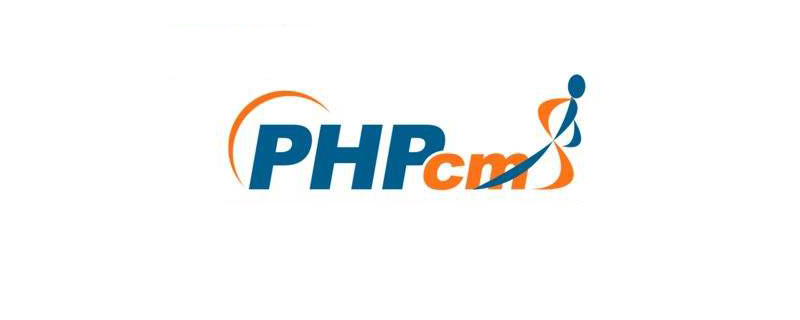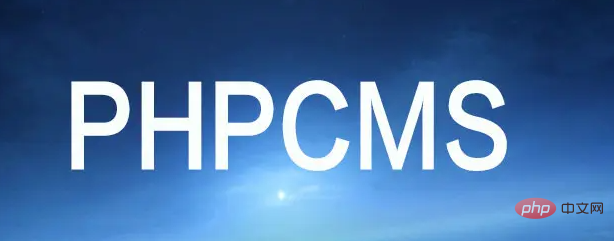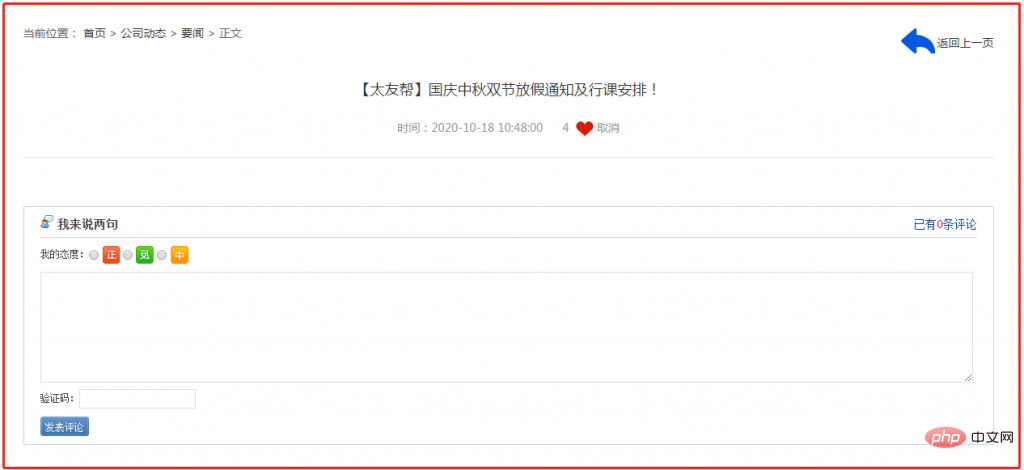Does phpcms have a comment function?
phpcms has a comment function. The built-in comment module of phpcms provides the function for website visitors to post their own opinions, allowing visitors to interact and exchange their opinions with each other to increase the popularity of the website. PHPCMS's comment function for users to leave messages has also added an audit function to prevent prohibited words from appearing in comments. For website administrators, the comment module of PHPCMS can easily manage user comments, and can find and manage message content based on time, keywords, review and other conditions.

The operating environment of this tutorial: windows7 system, phpcms v9 version, DELL G3 computer
PHPCMS is a website management software. The software adopts modular development and supports multiple classification methods. It can be used to facilitate the design, development and maintenance of personalized websites. It supports many program combinations, can easily realize website platform migration, and can widely meet the needs of websites of various sizes. It has high reliability. It is a software with articles, downloads, pictures, classified information, movies, shopping malls, collection, finance, etc. Excellent website management software that is powerful, easy to use, and scalable with many functions.
Phpcms is the leading website content management system in China and an open source PHP development framework. Phpcms is composed of more than 20 functional modules such as content model, membership, Q&A, special topics, finance, orders, advertising, email subscription, short messages, custom forms, and site-wide search. It has built-in news, pictures, downloads, information, and products 5 Big content model. Phpcms adopts modular development, supports custom content models and membership models, and can customize fields.

Comment module introduction
Why there is a comment module
The comment module provides the function for website visitors to post their own opinions, allowing visitors to interact and exchange their opinions with each other to increase the popularity of the website. What WEB2.0 dominates is the interaction between website visitors.
What are the characteristics of the comment module of PHPCMS
Like the comment function of mainstream portal websites, the comment of PHPCMS also has the function of user leaving messages. At the same time, PHPCMS has also added an audit function to prevent prohibited words from appearing in speeches.
For website administrators, the comment module of PHPCMS can easily manage user comments, and can find and manage message content based on time, keywords, whether to review or not, and other conditions.
How to use the phpcms comment module
1. Open the comment module
Management background Click "Module"->"Comment" and set it according to actual needs

2. Call the comment module through the iframe tag
In the article details page template, such as /phpcms/templates/default/content/show.html, add the following code
<?php $commentid = id_encode('content_'.$catid,$id,$siteid); ?> <iframe width="100%" height="100%" id="comment_iframe" frameborder="0" scrolling="no"></iframe>
The final effect is as follows

You can review and delete comments in the background "Content" -> "Comment Management"
PHP Chinese website, a lot of free PHPCMS Tutorial, welcome to learn online!
The above is the detailed content of Does phpcms have a comment function?. For more information, please follow other related articles on the PHP Chinese website!

Hot AI Tools

Undresser.AI Undress
AI-powered app for creating realistic nude photos

AI Clothes Remover
Online AI tool for removing clothes from photos.

Undress AI Tool
Undress images for free

Clothoff.io
AI clothes remover

AI Hentai Generator
Generate AI Hentai for free.

Hot Article

Hot Tools

Notepad++7.3.1
Easy-to-use and free code editor

SublimeText3 Chinese version
Chinese version, very easy to use

Zend Studio 13.0.1
Powerful PHP integrated development environment

Dreamweaver CS6
Visual web development tools

SublimeText3 Mac version
God-level code editing software (SublimeText3)

Hot Topics
 PHP framework and CMS integration: unlimited possibilities for technology integration
Jun 01, 2024 pm 05:16 PM
PHP framework and CMS integration: unlimited possibilities for technology integration
Jun 01, 2024 pm 05:16 PM
The benefits brought by the integration of PHP framework and CMS are: 1. Improve development efficiency; 2. Enhance security; 3. Simplify content management; 4. Flexibility. In a practical case, the Laravel framework was integrated with WordPressCMS to create a blog website with customized functions. The integration steps include creating a Laravel application, installing WordPress, configuring WordPress, creating a controller, defining routing, obtaining WordPress data, and in the Laravel view Display Data.
 What framework is phpcms?
Apr 20, 2024 pm 10:51 PM
What framework is phpcms?
Apr 20, 2024 pm 10:51 PM
PHP CMS is a PHP-based open source content management system for managing website content. Its features include ease of use, powerful functionality, scalability, high security, and free open source. It can save time, improve website quality, enhance collaboration and reduce development costs, and is widely used in various websites such as news websites, blogs, corporate websites, e-commerce websites and community forums.
 WeChat Login Integration Guide: PHPCMS Practical Combat
Mar 29, 2024 am 09:18 AM
WeChat Login Integration Guide: PHPCMS Practical Combat
Mar 29, 2024 am 09:18 AM
Title: WeChat Login Integration Guide: PHPCMS in Action In today’s Internet era, social login has become one of the essential functions of a website. As one of the most popular social platforms in China, WeChat’s login function is also used by more and more websites. This article will introduce how to integrate the WeChat login function in the PHPCMS website and provide specific code examples. Step 1: Register a WeChat Open Platform Account First, we need to register a developer account on the WeChat Open Platform and apply for the corresponding development permissions. Log in [WeChat open platform]
 PHPcms column cache storage path revealed
Mar 14, 2024 pm 03:18 PM
PHPcms column cache storage path revealed
Mar 14, 2024 pm 03:18 PM
PHPcms is a powerful content management system that is widely used in website development. Column caching is an important function in PHPcms, which can improve website access speed and reduce server pressure. This article will reveal the storage path of the PHPcms column cache and provide specific code examples. 1. What is column caching? Column caching refers to generating static files from the column content in the website and storing them in the specified path. When the user accesses the column, the static file is directly read instead of dynamically generating the page every time. this
 Practical tips for integrating PHPcms with other systems
Mar 15, 2024 am 08:18 AM
Practical tips for integrating PHPcms with other systems
Mar 15, 2024 am 08:18 AM
Practical tips for integrating PHPcms with other systems With the continuous development of Internet technology, the field of website development has become more diverse and complex. In actual projects, we often face situations where different systems need to be integrated, which requires us to have certain skills and experience to solve these problems. This article will introduce some practical tips and specific code examples for the integration of the PHPcms system with other systems to help developers better cope with challenges. 1. Basic Principles of Integration When performing system integration, it is first necessary to
 Impact and response to when PHPcms will stop maintenance
Mar 14, 2024 am 11:12 AM
Impact and response to when PHPcms will stop maintenance
Mar 14, 2024 am 11:12 AM
The impact and response of when PHPcms will stop maintenance. With the continuous development of Internet technology, website construction has become an essential tool for many companies and individuals. In website construction, the content management system (CMS) plays an important role. As a commonly used CMS tool, PHPcms was once very popular. However, as time goes by, the update and maintenance of the PHPcms version gradually decreases or even stops maintenance, which brings a series of impacts to users and developers. This article will explore the impact of PHPcms out of maintenance and provide a
 Build a PHP cloud transcoding CMS system to implement video transcoding services
Mar 16, 2024 am 08:30 AM
Build a PHP cloud transcoding CMS system to implement video transcoding services
Mar 16, 2024 am 08:30 AM
Build a PHP cloud transcoding CMS system to implement video transcoding services. With the rapid development of online videos, video transcoding services have become more and more important. In order to meet users' needs for video transcoding, building a PHP cloud transcoding CMS system is a good choice. In this article, we will introduce how to build a simple PHP cloud transcoding CMS system and provide specific code examples. First, we need to prepare a basic PHP development environment. Make sure you have PHP and MySQL installed and have a web server such as Apa
 PHP framework and CMS: powerful tools for building dynamic websites
Jun 01, 2024 pm 08:24 PM
PHP framework and CMS: powerful tools for building dynamic websites
Jun 01, 2024 pm 08:24 PM
Yes, PHP frameworks and CMS are very useful for creating dynamic websites. PHP frameworks (such as Laravel, CodeIgniter, Symfony) provide pre-built code structures that simplify common functions (such as authentication and form handling), while CMS (such as WordPress) allow non-technical people to manage content without programming skills. By combining these two tools, complex websites can be built quickly and efficiently.







